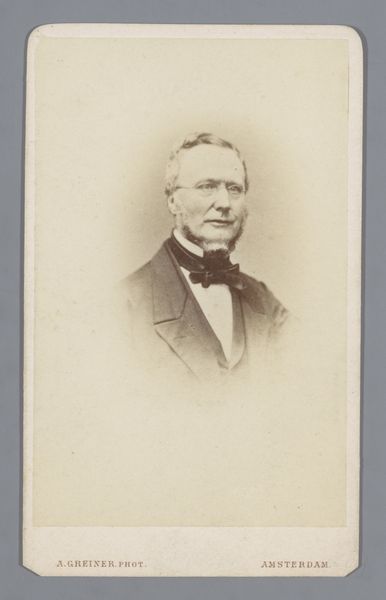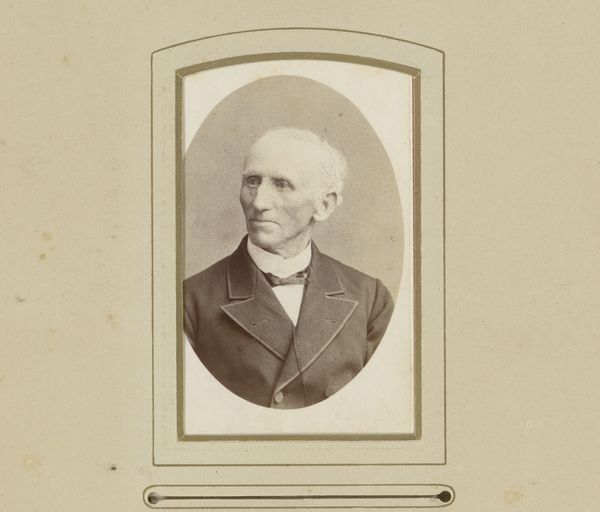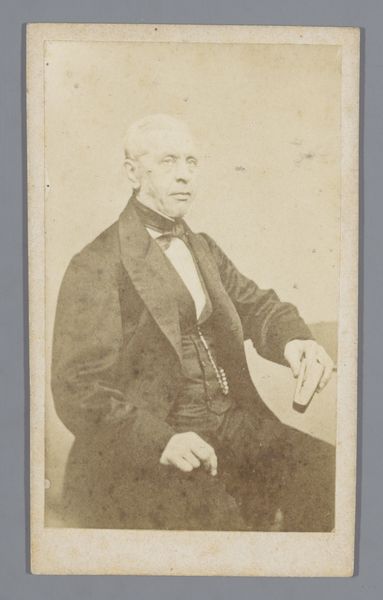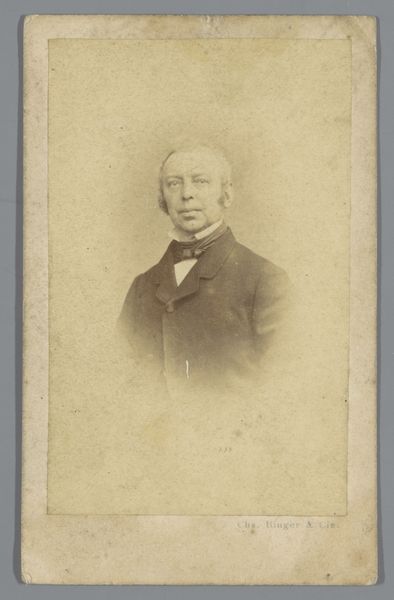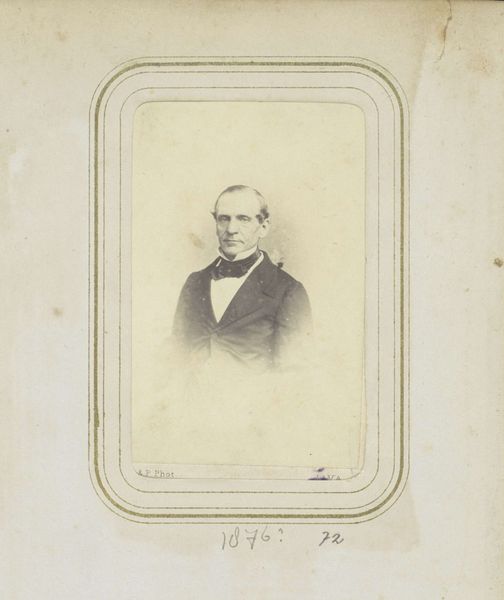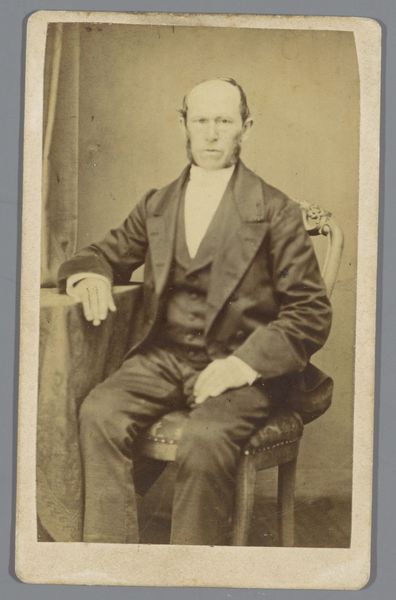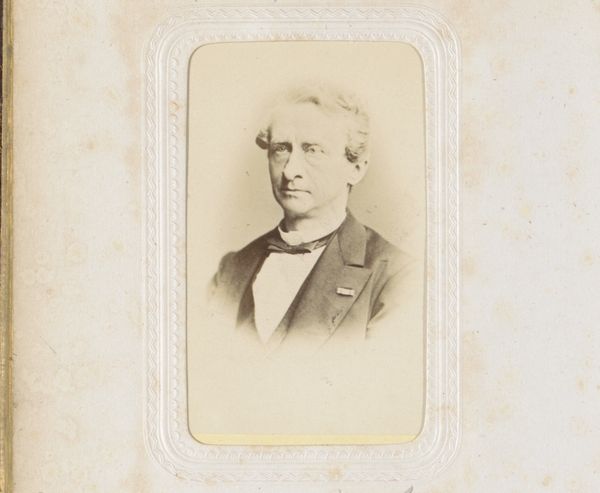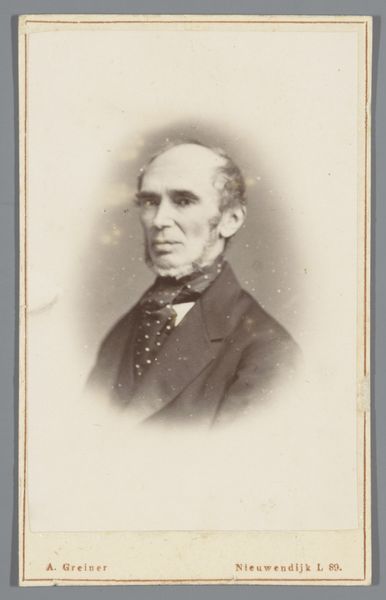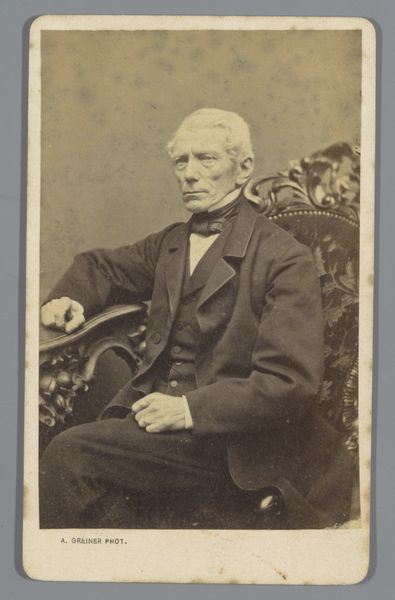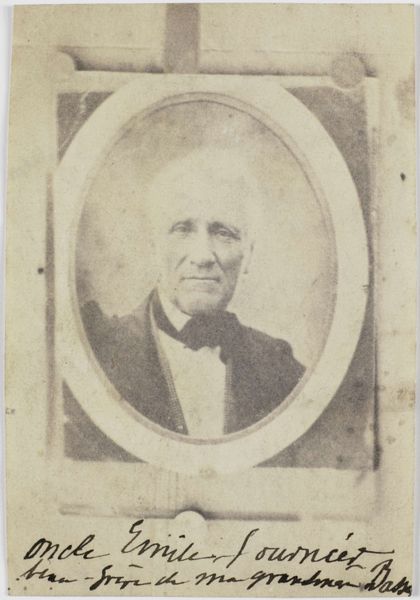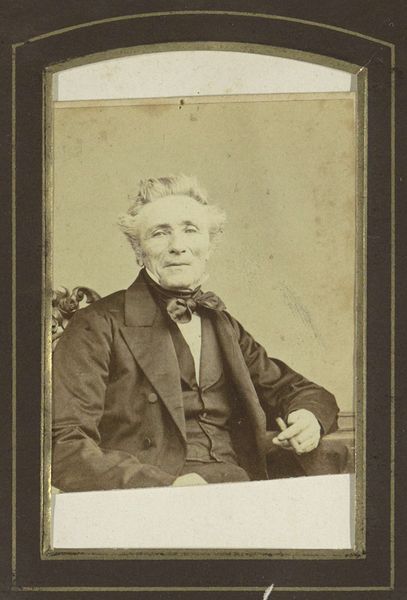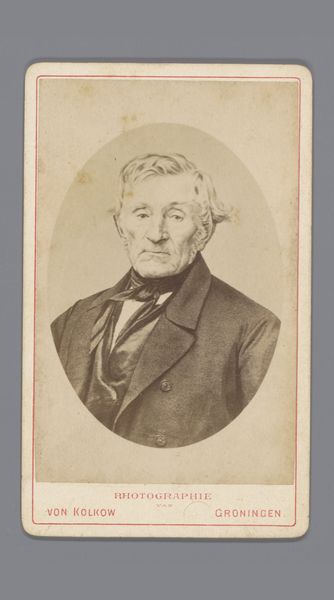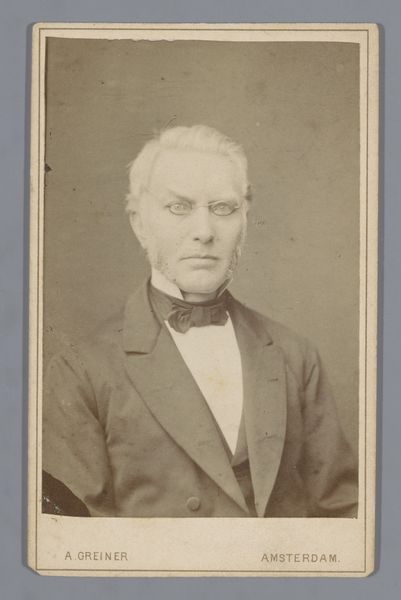
daguerreotype, photography, gelatin-silver-print
#
portrait
#
daguerreotype
#
photography
#
coloured pencil
#
gelatin-silver-print
#
19th century
Dimensions: height 105 mm, width 61 mm
Copyright: Rijks Museum: Open Domain
Curator: This gelatin-silver print, attributed to Matthijs Adolph Conen and titled "Portret van een onbekende man," captivates with its stern simplicity. Dating from sometime between 1861 and 1888, it immediately strikes me as intensely melancholy. Editor: Yes, the tonal range achieves a sort of austere gravitas. It speaks to the somber aesthetic typical of 19th-century portraiture, yet I find myself pondering the materiality. Given that it's a gelatin-silver print, how might the chemicals used in the development process impacted the print’s present-day condition? Are these spots merely surface imperfections? Curator: An astute observation. The slight discolouration you noticed certainly impacts how we perceive it. Focus first on the formal composition. The artist carefully positioned the man’s figure within a limited frame. This tight framing accentuates the sitter’s austere expression. Notice how the light gently sculpts his face, emphasizing the lines around his mouth. Editor: And one has to imagine what kind of time that sitter spent under intense lighting of this photographic production? You know the glass plate negatives, the precise timing for developing, printing. It shows such intense process which can become, paradoxically, abstracted and even lost in viewing what seems like a fairly basic portrait. Curator: Certainly. We often overlook the material act that produced the effect and emotional intensity. Perhaps we shouldn’t overlook those traces— those minor chemical imperfections that speak to a rich history of the dark room! They suggest that its materiality itself provides a critical language to interpreting such images. Editor: Agreed! By foregrounding process and materials, it prevents this photograph from becoming a purely symbolic relic. Understanding these production choices lets us connect to the work through not just an emotive language, but as a made thing. Curator: So true. Thanks for illuminating this picture, looking not only on the surface, but the labour that comes underneath, in crafting of the image itself. Editor: My pleasure! The more we understand such technical details the richer our dialogue around visual materials can become.
Comments
No comments
Be the first to comment and join the conversation on the ultimate creative platform.
